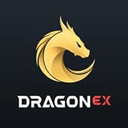Review on THORChain by onur bln

ThorCoin
On THORChain, users can swap their digital assets for other digital assets. The network aims to give users access to:
A large variety of assets through cross-chain compatibility and simple asset listing
Superior user experience through open finance protocols and permissionless access
1-transaction access to fast chains (Binance Chain), smart chains (Ethereum), censorship-resistant chains (Bitcoin) and private chains (Monero).
Decentralization
THORChain manages the swaps in accordance with the rules of the state machine - which is completely autonomous. Every swap that it observes is finalised, ordered and processed. Invalid swaps are refunded, valid swaps ordered in a transparent way that is resistant to front-running. Validators can not influence the order of trades, and are punished if they fail to observe a valid swap.
Continuous Liquidity Pools
Swaps on THORChain are made possible by liquidity pools. These are pools of assets deposited by Liquidity providers, where each pool consists of 1 connected asset, for example Bitcoin, and THORChain's own asset, RUNE. They're called Continuous Liquidity Pools because RUNE, being in each pool, links all pools together in a single, continuous liquidity network.
Costs
The cost of a swap is made up of two parts:
Network Fee
Price Slippage
All swaps are charged a network fee. The network fee is dynamic - it's calculated by averaging a set of recent gas prices. Learn more about Network Fees.
Note that users who force their swaps through quickly cause large slips and pay larger fees to liquidity providers.

Pros
- Liquidity providers charge fees and block rewards
- Staked capital is always written by the system
- The liquidity is always on the chain and is never "fixed" or "wrapped"
- Nodes are cut if malicious behavior is detected
Cons
- Nodes are anonymous











